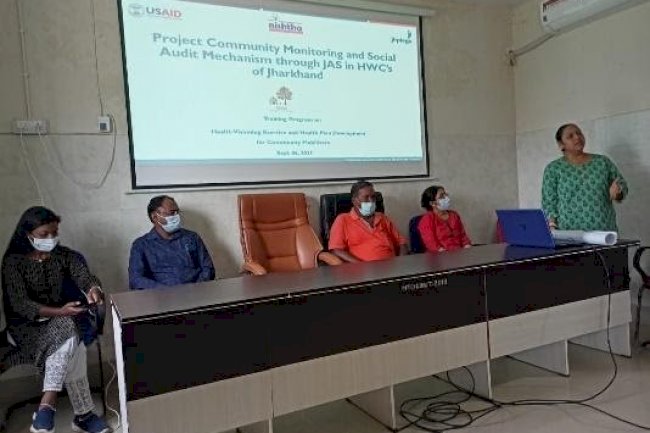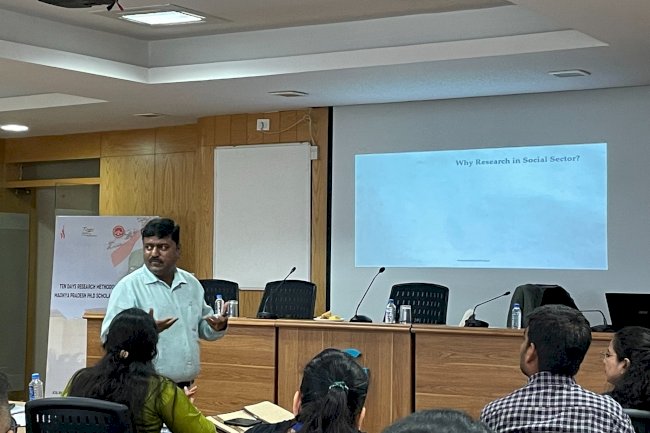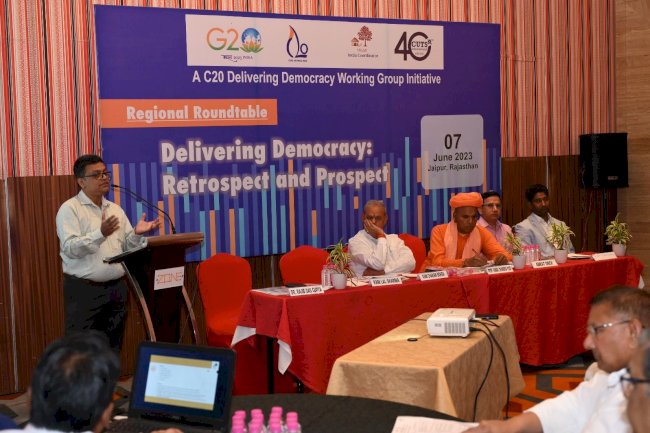'Education for the Tribal Communities – Present Scenario, Challenges, Policy intervention and Action Plan’.
#EducationForAll: VoicesOfTribal GRAAM in collaboration with the Tribal Forum of Karnataka organised a Webinar Series titled: 'Education for the Tribal Communities – Present Scenario, Challenges and Necessary Actions’ on a virtual platform between 7th to 11th of October. State Tribal Research Institute and Rise foundation also extended their support to this event.
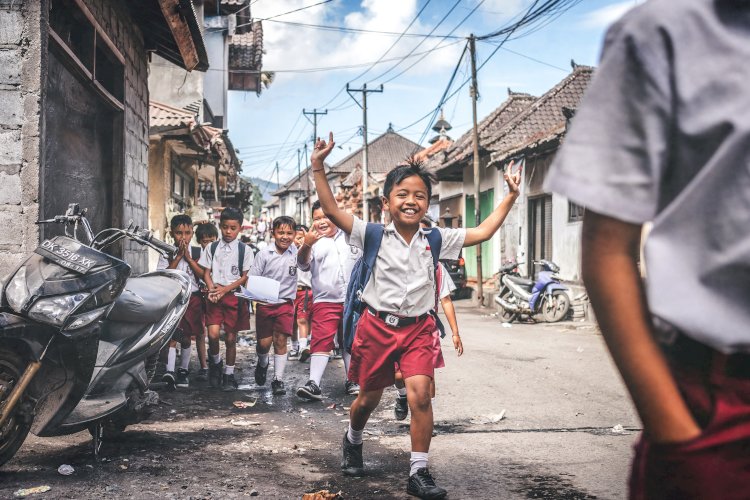
GRAAM in collaboration with the Tribal Forum of Karnataka organised a Webinar Series titled: 'Education for the Tribal Communities – Present Scenario, Challenges and Necessary Actions’ on a virtual platform between 7th to 11th of October. State Tribal Research Institute and Rise foundation also extended their support to this event.
Why Webinar on Tribal?: The Scheduled Tribes (ST) are among the most socially and educationally disadvantaged groups in India. Though the government has implemented several programmes for the social and economic upliftment of this community, all the development indicators highlight that they are distinct from the mainstream. This webinar focused on the issues concerning access to education and equity for Scheduled Tribe communities and also highlighted the problems induced by the pandemic and the need for policy intervention.
Objective of the Webinar: As heated debates take place across the nation on the implementation of National Educational Policy (NEP) -2020, Karnataka has been in the forefront to implement the policy and has taken up preliminary works. GRAAM as a Facilitator for development that expands the capabilities and potential of growth within communities at the grassroots level decided to uphold the voice of the tribal in the NEP along with like minded institutes. Through this webinar, GRAAM provided a forum to the tribals to put forth their opinions (policy level) on issues pertaining to education and their community.
Commenting on the topic, Dr Basavaraju R Shreshta, Executive Director, GRAAM said, “ Numerous changes are seen when a new policy is implemented and in the process, marginalised communities tend to get side-lined. They are always excluded in every process of inclusion. However, we must encourage the tribals to come forward and voice themselves otherwise, they will lose their rights. Giving a platform to them and taking their voices to policy makers is the main objective behind organising this webinar.”
GRAAM has compiled the issues discussed in the webinar and has prepared this consolidated report which can become a guide for preparing education policy for tribes.
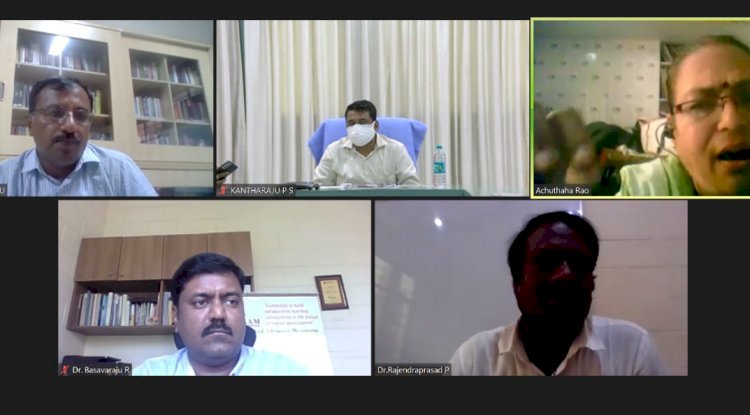
Key Issues discussed in the Webinar
- Educational system among the tribals and its impact: availability of schools-challenges-affects on academic progress
2.Ashrama schools or Public Instruction Department Schools -which is better suited for tribals? What are the limitations ? How can it be coordinated?
- Importance of curriculum framework in Tribal education and it’s availability
- Education among tribal girls, present scenario and constraints
- Higher education among tribals -need, present scenario and possibilities
Financial factors influencing tribal education
Family income will become a decisive factor in children’s education. Tribal habitants are deprived of basic necessities. When they can’t afford their basic necessities like food, clothes, house and health from their income, they can’t think of education. They don’t have a child education friendly environment and lack basic necessities like continuous electric supply. High schools and colleges are located in faraway places from tribal settlements. Lack of transportation facilities is the major hindrance for girl’s education.
Present Curriculum and learning method
Currently available teaching and learning materials won’t match with the tribal culture, society and life which is why students are unable to grasp. Most of the students have scored poor marks in Science, Maths and English. Non-tribal teachers are unaware of socioeconomic and cultural aspects of tribal community and Tribal language. This will adversely impact the education of the tribal children
Status of pre-primary education among tribes
Education status among tribes confirms the absence of children between the age group of 3 to 6 for pre primary education. Majority of the Jenu Kuruba settlements are deprived of Anganawadi centres. Even if there are workers, they are not taking up jobs in those schools owing to distance. More than integrated development of kids, parents considered Anganawadi centres as day care centres for their kids.
Difficulties associated with tribal school teachers
There are no permanent teachers in Ashrama schools and teachers are appointed on a part time basis and paid less salary. Teachers don’t enjoy any provisions like fixed payroll, leaves and other facilities like teachers who work in the schools that come under the Department of Public Instructions. Even their service won’t be continued for the next consecutive year. Ashrama schools are being run as a program and the efficiency and implementation is assessed through numbers, figures and statistics. The quality of education is never a criterion for assessment.
Introduce Kerala model schools
Kerala model tribal schools should be introduced in Karnataka and Ashrama schools should be upgraded upto PUC. Participants strongly demanded that education should be brought under the Department of Public instructions and management of the hostel should be handed over to the Social Welfare Department or Integrated Tribal Development Project (ITDP).
Suggestions
- Community participation should be enhanced to assure quality education and schools should plan different activities to boost parents’ involvement and participation in schools.
- Anganwadis should be started in tribal settlements on priority. Educated local tribal women should be appointed as Anganawadi workers and assistant cooks.
- Teachers should reside in tribal settlements and should create interest towards extra curricular activities among the kids along with academics. Tribal school curriculum should include tribal culture and traditional values.
- Better remuneration will give teachers security and motivation which in turn will result in better efforts towards teaching.
- Tribal school teachers should be appointed on a full-time and permanent basis. These schools should impart education up to High School. Special training should be imparted to teachers on tribal language, culture and lifestyle. Thus, the District Institute of Education and Training (DIET) should conduct foundation courses on priority.
- Regular meetings should be conducted with SDMC and they should be involved in school development. Frequent parents and teachers meeting to create awareness among the parents on education. A curriculum which is a blend of modern education as well as tribal culture should be introduced.
- Text books based on tribal languages Soligara Dhwani and Jenu Nudi should be introduced in schools. It should be introduced from Anganawadi to till 3rd standard
- Only a few have completed SSLC, PUC and Degree education among the tribes. Their achievement should be recognised and the government should provide government jobs to them. After securing a good job he/she can become a role model to others and he can inspire many others in his community towards pursuing education.
- An exclusive reservation should be provided to forest based tribes to pursue education and secure jobs.
- Tribals are good artists. They stitch 'Kaudi (quilts)’, create toys and other show pieces from bamboo and wood. Imparting training or developing diploma courses to pursue these skills will help to continue their work in their interested field and will add more value to the product.
- Career guidance, professional education and entrepreneurship training should be imparted to them.
- Skill development Programmes should be planned to empower tribal students to develop skills which have already existed in the tribal lifestyle.
What's Your Reaction?








